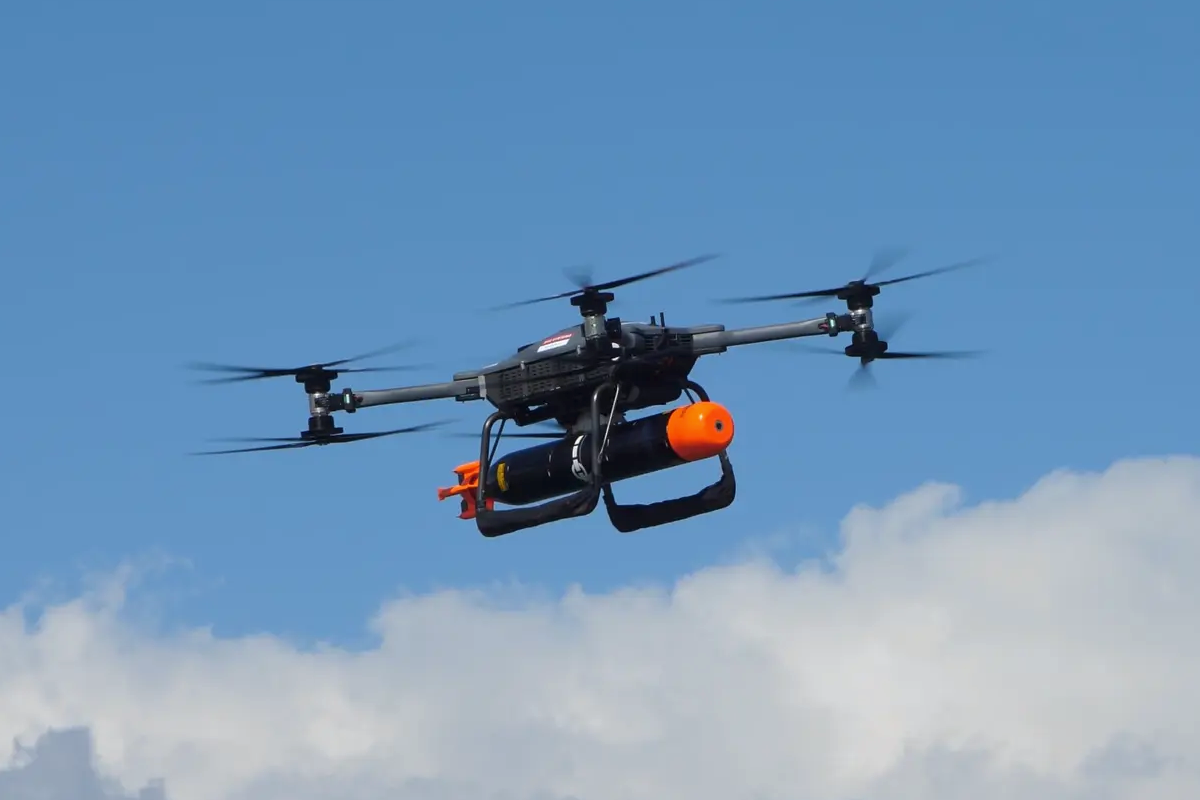
Trials of the T-600 heavy-lift uncrewed aerial system (UAS) quadcopter drone opened up a new route for the use of Sting Ray anti-submarine torpedos during a Nato exercise in Portugal, BAE announced on 27 September.
The advent of a the delivery system opens the door for maritime new platforms to be equipped for anti-submarine warfare (ASW).
“Our development of Sting Ray Mod 2 is focused not only on weapon effectiveness once deployed but also in increasing the ways in which Sting Ray can be deployed,” said Dave Quick, Head of Underwater Weapons at BAE Systems Maritime Services.
“A UAS launched Sting Ray would enable torpedo capability to be carried by a variety of naval platforms, providing increased operational flexibility for the use of Sting Ray.”
ASW technology driving the T-600 Sting Ray deployment
Rapid takeoff and portability are two advantages of unmanned aircraft systems in ASW. Along with crewed helicopters and specialised ASW surface boats, unmanned systems like the T-600 offer a new option to protect more expensive assets and the personnel operating them.
The T-600 is a heavy-lift UAS, built to the dimensions of ‘a small car’, according to BAE, with a payload carrying capacity of 200kg and a top speed of up to 140km/h, with a range of up to 80km, depending on the weight of the payload.
How well do you really know your competitors?
Access the most comprehensive Company Profiles on the market, powered by GlobalData. Save hours of research. Gain competitive edge.

Thank you!
Your download email will arrive shortly
Not ready to buy yet? Download a free sample
We are confident about the unique quality of our Company Profiles. However, we want you to make the most beneficial decision for your business, so we offer a free sample that you can download by submitting the below form
By GlobalDataThe Sting Ray launched from the T-600 was a Mod 2 variant of the lightweight torpedo that is currently in-service with the Royal Navy and Royal Air Force, and selected for the Norwegian Armed Forces. The Mod 1 is an air launched ASW weapon with an acoustic homing system that detects and attacks targets autonomously, and is launched from frigates, helicopters and maritime patrol aircraft.
The adaptation of the T-600 for use of the Sting Ray was possible through the addition of the L3Harris GnatHD carriage and release system, integrated with General Dynamic’s distributed management system. This gravity release unit from L3Harris is designed to carry the GBU-59, a 250lb (113kg) laser-guided bomb, an armament that weighs a little over half the maximum payload capacity of the T-600.
The REMPUS Nato exercise
The demonstration of the electric powered T-600 at Nato’s Robotic Experimentation and Prototyping with Maritime Uncrewed Systems (REMPUS) exercise follows two years of collaboration between BAE and Malloy, working with the UK Royal Navy and Portuguese Navy.
For the 15 Nato partners in attendance at Exercise REMPUS, this was an opportunity to test new technologies as well as new concepts and requirements for maritime uncrewed systems.
For BAE systems, REMPUS worked to validate and display technology that will eventually be integrated into the T-650 – a completely new design of all electric heavy-lift UAS. The T-650 has a speed and maximum range that is identical to the T-600, but the maximum payload capacity has been extended out to 300kg.







